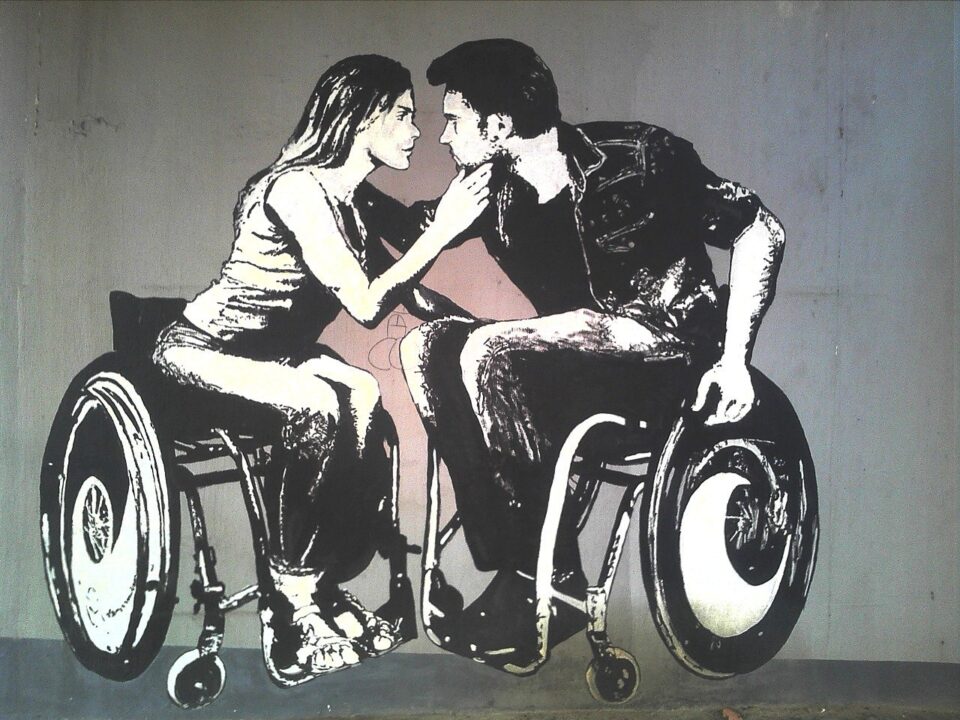
Critical Disability Theory
July 24, 2025
Fast Fashion: A Social Harm Perspective
July 25, 2025The State’s Harms
State Crime & Harm by Steve Tombs
The term state-corporate crime first appeared in 1990, when Kramer and Michalowski (2006, p 15) defined this phenomenon as signifying ‘illegal or socially injurious actions that occur when one or more institutions of political governance pursue a goal in direct co-operation with one or more institutions of economic production and distribution’. for Michalowski, Kramer and other scholars, state-corporate crime and harm can be initiated and facilitated by states.
Thus, corporations engage in illegality at the prompt, or with the approval, of state institutions, while state actors fail to prevent, respond to or indeed collude with such illegality.
More recently, Lass Lett (2010, para 4) has usefully expanded upon this concept, thus: ‘Corporate-initiated state crime occurs when corporations directly employ their economic power to coerce states into taking deviant actions’.
‘Corporate-facilitated state crime’ occurs ‘when corporations either provide the means for state criminality (e.g. weapons sales), or when they fail to alert the domestic/international community to the state’s criminality, because these deviant practices directly/indirectly benefit the corporation concerned’ (Lass Lett, 2010, para 4)These are important conceptual developments in the study of the crimes of the powerful.
The conceptual lens of state-corporate crime and harm has been applied to a range of events and contexts. From the explosion of the space shuttle Challenger and the crash of ValuJet Flight 592 to the technological underpinnings of the Holocaust, the contemporary seizure of natural resources in occupied Iraq and beyond, and the oil spill in the Gulf of
Mexico, to a variety of harms and crimes committed in conflict zones, occupation and the ‘war on terror’, as well as to diverse sectors such as the Latin American shrimp industry, the Nigerian oil sector, and the arms trade (see Green and Ward, 2004; Michalowski and Kramer,2006).
These various indicative areas make it immediately clear how state-corporate activities can produce harms which affect vast numbers of people and other organisations, emanating from a range of activities and sectors, across local, national and even global contexts.
Noting the extent to which the concept of state corporate crime and harm has proven productive and significant, Tombs (2012) recently sought to extend and develop it. In so doing he stressed the inter-dependencies – the symbiotic relationships – between states and corporations.
irst, he emphasised the fact that the corporation is a creation of the nation-state and is maintained through a great deal of state activity. Corporations are wholly artificial entities whose very existence is provided for, and maintained, through and ideological supports.
Certainly, it is the case that maintaining the conditions of existence of contemporary corporations, even, or perhaps especially, in ‘free’ markets, requires an enormous amount of state activity.
The logical corollary of this claim is that just as states create and sustain markets, so too can and do they create and sustain criminogenic markets, that is, markets that are conducive to, or facilitate, the production of harms and crimes.
The corporate form and the state are thus inextricably linked to the extent that, in contemporary capitalism, each is a condition of existence of the other.
At the most basic and manifest level, states appear complicit in corporate crime and harm production through omissions, specifically in terms of their failures to: put into place more effective legal regimes; to enforce adequately existing laws; and to respond effectively to violations of such laws.
A second way in which states may be and appear complicit incorporate crime and harm production is through their formal, often intimate, relationships with the corporate sector.
These relationships take various forms, such as, states’ (local, regional, national) effective role as joint partners with the private sector in various forms of economic activity, as out-sources and contractors of economic activity, and as key purchasers of corporate goods and services.
These generally proceed through contracts, new regulatory regimes, regulatory reform, or a combination of each. The significance of such relationships increases as states formally withdraw from directly providing goods and services, both under longer term conditions of neo-liberalism, and more specifically within the claims for fiscal crisis upon which the economics and politics of austerity are based.
If then, states and corporations produce crime and harms via their symbiotic relationships, to the extent that these symbioses become deeper and more prevalent, then it is expected that such crimes and harms will proliferate
Fashion
The goal of the article is first, to emphasise the criminological relevance of harm that occurs because of fast fashion, which serves as a representative example of a normalised, yet harmful practice of neoliberal capitalism.
Second, the goal is to advocate for the importance of the concept of social harm, which helps to uncover harm, as well as for the indispensability of the concept of state violence, which sheds light on the causes of the production of harm.
By demonstrating the relevance of both concepts, that is, social harm and state-corporate crime, I argue for the importance of collaboration between different strands of criminological thought to bring to light harmful activities of those in power.
In the following sections: (i) the phenomenon of fast fashion is introduced, followed by the concept of social harm as defined by Pemberton (2016) and the concept of state-corporate crime.
(ii) the concept of social harm is applied to the inadequate occupational health measures and safety protections in the production of fast fashion in major garment exporting countries, followed by the concept of state-corporate crime.
(iii) likewise applied to the above-mentioned aspect of the fast fashion industry; and (iv) concluding remarks ensue.
Fast Fashion from a Social Harm
The global fashion industry carries a net worth of three trillion dollars, which represents 2% of the global Gross Domestic Product (GDP) (Fashion United undated). The global production of clothing doubled between 2000 and 2015, while the number of times an average individual wears a piece of clothing before throwing it away decreased by 36% in the US and by 70% in China (Ellen MacArthur Foundation undated).
The number of people working in the garment industry has risen significantly since the 1990s. In 2016, one out of six global citizens worked in the fashion industry production chain, with three out of four of those employed being women (Cheney 2016).
Consumption has likewise risen considerably, in the UK, for example, by one-third (Fletcher 2015, p.18). The price of clothing has, on the other hand, fallen dramatically since 2000, in Europe about by 26.2% and by 17.1% in the USA.
Today’s fashion consumers shop in larger quantities and more frequently (Hobbes undated) than in the 1990s yet expect to get more for their money than they are willing to spend (de Klerk and Tselepis 2007).
Thirty years ago, fashion brands planned months in advance to produce a total of four (or less) new fashion collections per year (Hobbes undated). In recent years, however, brands such as Fashion Nova have been launching 300–900 new styles every week (Nguyen 2020), with the fashion industry producing over 100 billion items of clothing annually (Segran 2020).
Fast fashion has been on the rise since the 1990s and is characterised by short production and distribution times (as a fast response to demand), and a particular focus on the fashion ability of the products (Cichon and Swinney 2011).
Clothes are largely designed and marketed in the countries of the Global North (USA, Europe and Japan), while production has been in the countries of the Global South since the end of the 20th Century (Martin 2013, p.3).
The relentless struggle between countries of the Global South to attract capital and maintain their place in the supply chains of large brands is reflected in the constant lowering of labour and environmental standards (Laine 2015).
Countries of the Global South often argue that they cannot afford higher standards until they reach a certain level of development and claim that they cannot maintain or raise their standards, because they will not be able to compete with other countries of the Global South, if they do so (Sengenberger 2005, pp.8–9).
Seeing that criminal law is not adequately addressing the harms that occur in the fast fashion industry, this article aims to analyse them from a criminological perspective, leaning on two concepts that have their foundations in critical criminology.
The next two sections introduce these two concepts, that is, Pemberton’s social harm concept as well as the concept of state-corporate crime
State-Corporate Crime
While corporate crime is a broad term, covering a plethora of offences, Tombs and Whyte (2015) list the following four types: financial theft and fraud (financial services fraud), crimes against consumers (food crimes), crimes against workers (safety crimes) and crimes against the environment (air pollution).
Corporations do not exist in a vacuum; their harmful or even criminal activities are often enabled by their relationships with the state, which legitimises (by not regulating their practices) or turns a blind eye to their activities (by not enforcing existing laws) (Tombs 2020).
State crimes are, on the other hand, acts that cause material, physical or social harm to individuals because of government policies, whether these harms are intentional or unintentional (Barak 1991).
The concept of state-corporate crime was developed by corporate crime scholars Kramer and Michalowski (2006) in the 1990s and defined as: ‘illegal or socially injurious actions that occur when one or more institutions of political governance pursue a goal in direct co-operation with one or more institutions of economic production and distribution’ (p.15).
The authors based their observations on the work of Richard Quinney who made important contributions to the study of corporate and white-collar crime (Kramer, Michalowski and Kauzlarich 2002). As early as the 1970s, Clinard and Quinney (1973) emphasised the power that corporations exercise over the courts and state agencies.
Furthermore, Quinney stood on the front lines of what was first called radical, and later critical, criminology in the period after the Vietnam war in the United States (Michalowski 1998). The concept of state-corporate crime:
blends the phenomenology of law-making with the political economy of crime into a single framework for studying wrongdoing in the upper reaches of industrial/post-industrial society. In doing so, it links the two intellectual streams that shaped the creation of a critical criminology,
i.e. social constructionism and Marxism (Taylor, Walton, and Young 1973), that were so well represented in Richard Quinney’s early radical thought. (Kramer, Michalowski and Kauzlarich 2002, p.265)
State-corporate crime can occur as state-initiated corporate crime or as state-facilitated corporate crime. According to Michalowski and Kramer (2007):
State-initiated corporate crime occurs when corporations, employed by the government, engage in organizational deviance at the direction of or with the tacit approval of the government. State-facilitated corporate crime occurs when government regulatory institutions fail to restrain deviant business activities, either because of direct collusion between business and government or because they adhere to shared goals whose attainment would be hampered by aggressive regulation. (p.209)
For the purpose of this article, I applied Michalowski and Kramer’s (2007, p.210) conceptualisation of state-corporate crime, which focuses on the causes of criminal or deviant behaviour at the level of political and economic structures, organisations, as well as individuals, on the fast fashion industry.
Pemberton’s Concept of Social Harm and Its Origins
Two of the most common contentions by the proponents of various branches of critical criminology are that criminology should broaden the scope of its research (Muncie 2000, p.6) and that the discipline has historically sanctioned the behaviours of the powerless, while ignoring similar acts perpetrated by the powerful (Becker 1991;
Box 1983; Muncie 2000; Reiman and Leighton 2016; Vegh Weis 2017). The conceptualisations of ‘conduct norms, social aberrance, social deviance, social injury and social harm’ (Tombs 2018, p.20) are a testament to one of the key objectives of many critical criminologists, that is, to expand the discipline to study the harm overlooked by criminal law.
Among critical criminologists (and zemiologists) who have argued for the expansion of the field of research in criminology to acts other than criminal acts were, for example, Sutherland (1940, 1941), Schwendinger and Schwendinger (1970), Michalowski (1985), Kramer (1985), Tifft and Sullivan (2001), Muncie (2000), Hillyard and Tombs (2004).
The concept of social harm, that has been developing as an alternative to the notion of crime since the 1960s, can be used to describe various negative events, inequalities and injustices that are, despite their harmfulness, largely not addressed by criminal law (Hillyard and Tombs 2004).
Fast fashion, examined in this article, with its focus on producing cheap clothes fast, often and in large quantities, is a representative example of such a harmful practice.
The fact that this kind of harm is often overlooked by criminal law and marginalised in conventional criminology sends a message to the wider public that it is not as catastrophic as those acknowledged by criminal law and mainstream criminology.
Pemberton (2016) builds on Doyal and Gough’s (1991) theory of human flourishing and operationalises a ‘needs’ approach to harm. The authors define harm as either ‘the fundamental disablement in the pursuit of one’s vision of the good’ or as ‘an impediment to successful social participation’ (p.50).
Pemberton (2016) thus concludes that to avoid harm and achieve adequate levels of self-actualisation and social participation, specific human needs must be fulfilled. He defines social harm as (i) physical and mental health harms, (ii) autonomy harms, and
(iii) relational harms. Pemberton focuses on the fact that harmful events (that is, those that remain under human control) are preventable, as opposed to harm caused intentionally, which dominates conventional criminological discourse.
The concept of social harm as conceptualised by Pemberton is useful in the analysis of fast fashion, in the context of which many harmful events are portrayed simply as an inevitable consequence of the contemporary capitalist mode of production.
The first category of harms according to Pemberton (2016), harms to physical and mental health, occur when an individual does not have the ability to maintain sufficiently good health to enable him or her to ‘live an active and successful life’ (Doyal and Gough 1991, p.59).
The quality of life one is able to lead is an indicator of whether harm has or has not occurred. To avoid harm, a wide range of needs must be met, such as access to adequate health care and housing, a healthy diet, recreation and a safe physical environment.
Autonomy harms, the second form of harms according to Pemberton, occur when an individual is incapacitated in his or her attempts at self-actualisation and is thus unable to make choices or lacks the capability to act on these choices.
One’s autonomy is undermined when someone does not have access to education and lacks the opportunities to participate in purposeful and productive social activities, such as paid work and having children, and is unable to participate in social and civil affairs.
The third form of harm conceptualised by Pemberton is relational harm, which occurs when an individual is excluded from social relationships, is perceived as the ‘other’ or when an individual is not accepted in the society in which they live due to their lifestyle (Pemberton 2016, p. 30).
Commenting on Pemberton’s work, Tombs (2015) notes that Doyal and Gough’s ‘needs framework’ requires greater conceptual and theoretical development, if it is to serve as a base for the definition of harm. Kotzé (2018, p.91), on the other hand, questions
Pemberton’s approach of separating ‘social’ and ‘criminal’ harm, denoting it as ‘a bid to carve out a zemiological niche that focuses solely upon a bounded conception of harm, artificially divorced from the broader facets with which the term zemia is concerned’ – namely crime and punishment.
Kotzé (2018, p.102) furthermore argues for a reconnection, rather than a decoupling of crime and harm with the goal of recognising ‘the collaborative potential of criminology and zemiology to provide a stronger lens through which we may take a full look at the worst’.
Pemberton, focusing more on understanding and developing the notion of social harm itself, apart from the role it has or may play in critical criminology or semiology (Copson 2011, p.45), does appear to be somewhat aligned with that goal.
While I do see the urgency for the creation of a new discipline with a new discourse of social harm and perceive the usage of the social harm concept in a society that relies on the language of crime to establish what is acceptable and what is not as a necessary political act (Tombs 2018 p.19), the goal of this article is not to weigh in on the debate as to whether the concept of social harm should be further developed within critical criminology or within semiology.
Both semiology and criminology are interested in attributing responsibility for, and addressing the causes of harm (Copson 2018), such as those that occur because of fast fashion, and the tension between the two disciplines must not obscure this common goal.
After the introduction of the state-corporate crime concept in the next section, the following sections will thus shed light onto this common goal by exposing the harms of the fast fashion industry from a social harm and a state-corporate crime perspective that, together, can help advance accountability and prevention




